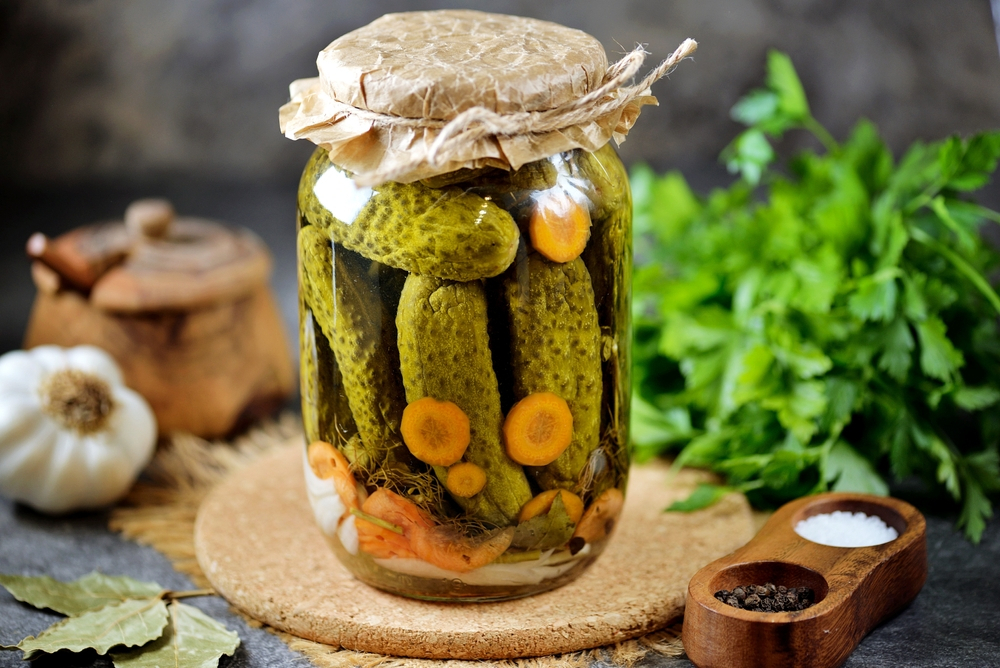When it comes to preserving the freshness and flavors of seasonal vegetables, homemade pickles are a delightful solution. Making pickles at home allows you to control the ingredients, experiment with flavors, and enjoy the satisfaction of creating something delicious from scratch. In this article, we will guide you through the process of making homemade pickles with fresh ingredients, providing step-by-step instructions, tips, and tricks for a successful pickle-making adventure.
1. Gather the Necessary Equipment
Before diving into the pickle-making process, it’s important to ensure you have all the essential equipment. Here’s a list of items you’ll need:
- Glass jars with airtight lids
- Large pot for boiling
- Cutting board and sharp knife
- Mixing bowl
- Measuring cups and spoons
- Stainless steel saucepan
2. Selecting the Perfect Vegetables
The key to flavorful homemade pickles lies in selecting the right vegetables. Opt for fresh, firm, and crisp vegetables such as cucumbers, carrots, radishes, or green beans. Ensure they are free from any blemishes or soft spots.
3. Preparing the Vegetables
To prepare the vegetables for pickling, wash them thoroughly under cold water. Trim off any stems or ends, and slice them into desired shapes and sizes. You can experiment with various cuts like slices, spears, or rounds to add visual appeal to your pickles.
4. Creating the Pickling Liquid
The pickling liquid is what gives the pickles their tangy and flavorful taste. In a stainless steel saucepan, combine equal parts of water and vinegar. Add in salt, sugar, and desired spices such as dill, garlic, or peppercorns. Bring the mixture to a boil, stirring until the salt and sugar dissolve completely.
5. Packing the Jars
Once your pickling liquid is ready, it’s time to pack the jars with the prepared vegetables. Fill the jars tightly with the vegetables, leaving about half an inch of headspace at the top. Pour the pickling liquid over the vegetables, ensuring they are fully submerged.
6. Sealing and Storing the Pickles
After packing the jars, seal them tightly with their airtight lids. Allow the jars to cool to room temperature before storing them in the refrigerator. Refrigeration is crucial for the pickles to develop their flavors and achieve the desired texture. They can typically be enjoyed after a week, but the longer they sit, the more pronounced the flavors become.
7. Patience and Waiting Game
One of the hardest parts of making homemade pickles is the waiting game. As the flavors meld together over time, it’s important to exercise patience and resist the temptation to open the jars too soon. Wait at least a week before indulging in the tangy goodness of your homemade pickles.
8. Enjoying Your Homemade Pickles
Once the waiting period is over, it’s time to enjoy the fruits of your labor. Homemade pickles make a delicious addition to sandwiches, burgers, salads, or enjoyed on their own as a delightful snack. The flavors and crunch of your homemade pickles will surely impress your taste buds and those lucky enough to try them.
Conclusion
Making homemade pickles with fresh ingredients is a rewarding and enjoyable culinary experience. By following the steps outlined in this article, you can create flavorful pickles that will elevate your meals and impress your friends and family. So, gather your ingredients, embrace the waiting game, and embark on a pickle-making adventure that will leave you craving more.
FAQs
Q: How long can homemade pickles be stored?
A: Homemade pickles can be stored in the refrigerator for several months. The longer they sit, the more intense the flavors become.
Q: Can I reuse the pickling liquid?
A: Yes, you can reuse the pickling liquid for subsequent batches of pickles. However, it’s important to ensure that the liquid remains fresh and hasn’t been contaminated.
Q: Can I adjust the level of spiciness in my pickles?
A: Absolutely! You can customize the spice level of your pickles by adding hot peppers or red pepper flakes to the pickling liquid. Adjust the amount according to your personal preference.
Q: Can I use other vegetables apart from cucumbers?
A: Certainly! While cucumbers are a popular choice, you can experiment with other vegetables like carrots, radishes, green beans, or even cauliflower to create a variety of pickles.
Q: Can I make pickles without using vinegar?
A: Yes, you can make fermented pickles without using vinegar. Fermentation relies on the naturally occurring lactic acid bacteria. It’s a longer process but yields tangy and probiotic-rich pickles.

